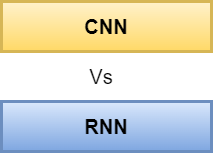Introduction
In the realm of artificial intelligence and deep learning, two popular neural network architectures have emerged: Convolutional Neural Networks (CNN) and Recurrent Neural Networks (RNN). These two models have revolutionized various fields, including computer vision, natural language processing, and speech recognition. In this comprehensive article, we delve into the core dissimilarities between CNN and RNN, providing you with an in-depth understanding of their respective strengths and applications.
Breaking Down the Basics: CNN vs. RNN
Convolutional Neural Networks (CNN), also known as ConvNets, are primarily designed for processing grid-like data, such as images or 2D signals. They leverage specialized layers called convolutional layers, which enable them to automatically learn and extract relevant features from the input data. CNNs excel at tasks like image classification, object detection, and image segmentation due to their ability to capture spatial relationships effectively.
On the other hand, Recurrent Neural Networks (RNN) are specifically tailored for handling sequential data, where the order of elements matters. Unlike CNNs, RNNs have loops within their architecture, allowing them to maintain a memory of past inputs. This memory enables them to process sequences of varying lengths and capture temporal dependencies effectively. RNNs have found success in tasks like speech recognition, language translation, and sentiment analysis.
Architectural Differences: CNN and RNN Unveiled
CNN Architecture
The core building blocks of a CNN include convolutional layers, pooling layers, and fully connected layers. Convolutional layers utilize filters or kernels to perform local receptive field operations, applying convolutions to the input data. These operations help the network learn hierarchical representations of the data, starting from low-level features (e.g., edges, textures) and progressing towards high-level features (e.g., objects, patterns).
Pooling layers, such as max pooling or average pooling, reduce the spatial dimensions of the learned features, making the network more robust to translations and providing some degree of invariance. Finally, fully connected layers consolidate the learned features and make the final predictions based on the extracted representations.
RNN Architecture
Unlike the feedforward nature of CNNs, RNNs have recurrent connections that allow information to flow in cycles. This cyclic nature enables RNNs to process sequential data by capturing dependencies over time. The key component of an RNN is the recurrent cell, which maintains a hidden state and takes both the current input and the previous hidden state as input. This hidden state serves as a form of memory that carries information from previous inputs, making RNNs capable of modeling sequences effectively.
There are various types of RNN cells, including the simple RNN cell, the long short-term memory (LSTM) cell, and the gated recurrent unit (GRU) cell. These cell variants enhance the ability of RNNs to capture long-term dependencies and alleviate the vanishing gradient problem commonly encountered in deep architectures.
Use Cases and Applications
CNN Applications
Convolutional Neural Networks have demonstrated exceptional performance in a wide range of applications. Here are some notable use cases:
Image Classification: CNNs can classify images into distinct categories with high accuracy, enabling applications like autonomous driving, medical image analysis, and content-based image retrieval.
Object Detection: By combining CNNs with techniques like bounding box regression and non-maximum suppression, objects within images can be accurately localized and classified. This is invaluable in areas like video surveillance and self-driving cars.
Image Segmentation: CNNs can assign semantic labels to individual pixels, enabling precise image segmentation. This is crucial in medical imaging for tasks like tumor detection and organ segmentation.
RNN Applications
Recurrent Neural Networks excel in tasks that involve sequential data and temporal dependencies. Here are some prominent applications:
Language Modeling: RNNs can model the probability distribution of sequences of words, enabling them to generate coherent and contextually relevant text. Language translation, chatbots, and speech recognition systems benefit from RNN-based language models.
Speech Recognition: RNNs, especially with LSTM or GRU cells, are highly effective in converting spoken language into written text. They are widely used in voice assistants, transcription services, and automated call center systems.
Time Series Analysis: RNNs are particularly adept at modeling and predicting sequential data over time, making them valuable in applications like stock market forecasting, weather prediction, and anomaly detection.
Differences between CNN and RNN
| Feature | CNN | RNN |
|---|---|---|
| Architecture | Feedforward | Recurrent |
| Data Type | Grid-like (e.g., images) | Sequential (e.g., text, speech) |
| Memory | No explicit memory | Has memory to capture temporal dependencies |
| Processing | Local receptive field operations (convolutions) | Sequential processing with recurrent connections |
| Strength | Effective in spatial feature extraction | Effective in capturing temporal dependencies |
| Applications | Image classification, object detection, image segmentation | Language modeling, speech recognition, time series analysis |
| Training | Parallelizable due to independent convolutions | Sequential training due to dependencies |
| Vanishing Gradient | Not as prone to vanishing gradient problem | Can suffer from vanishing gradient problem |
| Inputs | Fixed-sized inputs | Variable-sized inputs |
| Memory Usage | Lower memory requirements | Higher memory requirements |
Conclusion
In this comprehensive article, we explored the fundamental differences between CNN and RNN architectures. While CNNs excel in tasks involving grid-like data, RNNs shine in processing sequential and temporal data. By understanding the unique strengths and applications of each model, you can leverage their power to tackle a wide range of AI problems effectively.
Remember, choosing the right neural network architecture depends on the nature of your data and the specific task at hand. By harnessing the capabilities of CNNs and RNNs, you can unlock the full potential of deep learning in your projects.

Post a Comment